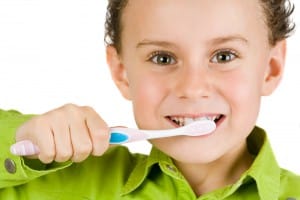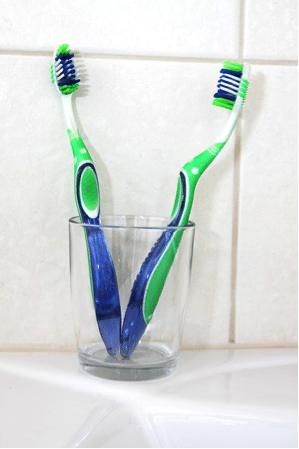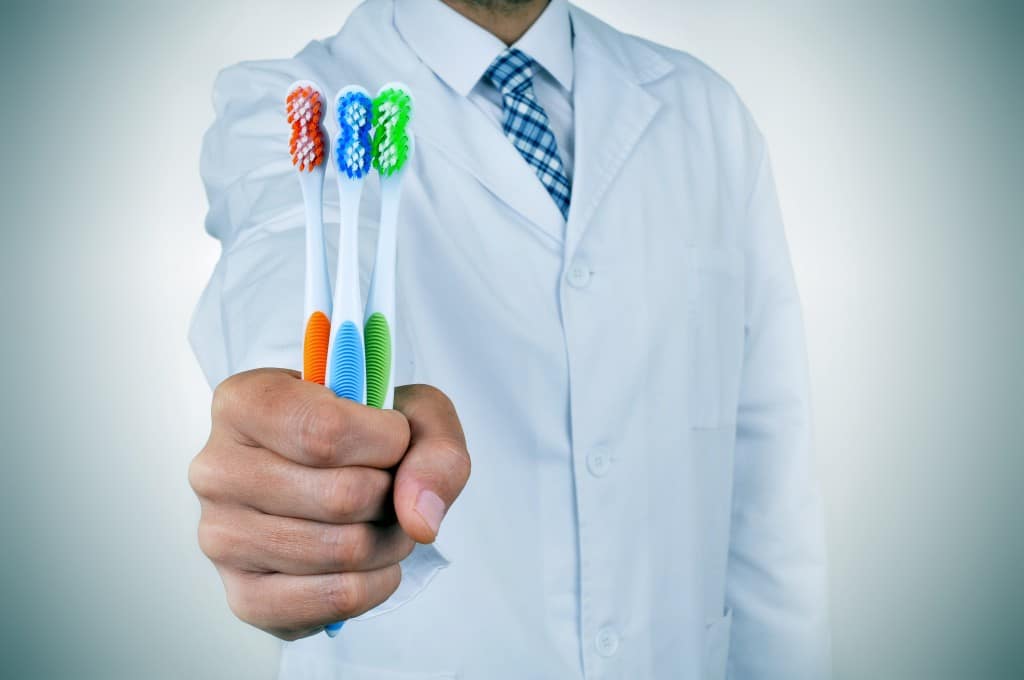Your toothbrush is the first line of defense against plaque and tooth decay. Knowing how often you should change your toothbrush can help you keep your teeth healthy and your smile white. Let’s take a look at toothbrush care, including how often to replace your toothbrush, the importance of timely replacements, and the best practices for both manual and electric toothbrushes.
How Often Should You Change Your Toothbrush?

Just like any other tool, the effectiveness of your toothbrush diminishes over time as the bristles wear down. Regular replacement is a crucial aspect of maintaining your oral health. Keep a keen eye on your toothbrush’s condition – if it looks worn, it’s signaling that it’s time for a fresh start.
This is the question at the forefront of most people’s mind when it comes to toothbrush care and maintenance. But you may have other questions as well, like why it’s important to regularly change your toothbrush, the differences between electric toothbrushes and manual toothbrushes, and how to best maintain your toothbrush.
Why Replacing Your Toothbrush is Important
Now that you know how often to replace your toothbrush, you might be wondering why this is important. Fresh bristles are essential for effective plaque removal, preventing the accumulation of harmful bacteria that can lead to gum disease and cavities. A timely switch also plays a pivotal role in preventing bad breath, as worn-out bristles are less effective in combating odor-causing bacteria. Regularly replacing your toothbrush is a small, yet impactful step toward maintaining excellent oral health.
New toothbrushes are more effective in fighting:
- Bad breath
- Stains
- Plaque
- Cavities
- Gum disease
Electric Toothbrushes vs Manual Toothbrushes
Whether you prefer the classic manual toothbrush or have embraced the electric revolution, it’s important to replace both of these regularly. As previously stated, manual toothbrushes should be replaced every 3 to 4 months. Electric toothbrushes are similar, but have a few advantages over manual toothbrushes.
For electric toothbrushes, it’s often recommended to replace the brush head every three months. The advantage of electric toothbrushes lies in their ability to maintain consistent brushing pressure, ensuring a thorough clean. Studies show that the rotating motion of electric toothbrushes allow them to clean plaque more effectively and consistently. However, the bristle wear remains a similar indicator for both types, emphasizing the importance of regular replacement for optimal performance.
Other Toothbrush Maintenance Tips

Finally, don’t store your toothbrush near the toilet; when the toilet flushes, it emits airborne particles that can contaminate your toothbrush. This is another good reason to regularly replace your toothbrush, and periodically soak your toothbrush in antibacterial mouthwash or hydrogen peroxide solution. It’s also a good reason to close the toilet lid when you flush.
If you notice that your toothbrush bristles are wearing down or fraying sooner than three to four months, you might be brushing too hard. You don’t need a lot of pressure to clean your teeth. If your toothbrush is frequently fraying, ask your dentist if your teeth are showing signs of abrasion, and try to consciously brush a bit more gently.
For quick reference, here’s a few toothbrush maintenance tips that will help you keep your toothbrush clean:
- Replace your manual toothbrush or electric toothbrush head every 3 to 4 months
- Store toothbrush upright to allow it to air-dry
- Don’t share your toothbrush with someone else
- Soak your toothbrush periodically in an antibacterial mouthwash or hydrogen peroxide solution to reduce bacteria
- Don’t store your toothbrush near the toilet
- Brush gently; too much pressure can wear your teeth down
Which Toothbrush is Best?
Choosing the right toothbrush is a personal decision, but certain guidelines can help you make an informed choice. Opt for a toothbrush with soft or medium bristles to avoid causing damage to your gums and enamel. Hard-bristled toothbrushes can be abrasive, potentially leading to sensitivity and gum recession. Prioritize the American Dental Association (ADA) seal of approval to ensure the toothbrush meets essential safety and efficacy standards.
When choosing between manual vs electric toothbrushes, your preference is most important. Though electric toothbrushes have been shown to be more effective, both manual and electric toothbrushes have enough plaque-fighting power to keep your teeth clean and healthy.
Now that you know how often you should change your toothbrush, why it matters, and how to maintain it, you’ll have better tools and information to keep your teeth healthy. Remember to brush twice daily, floss once daily, and visit your dentist every six months to keep your teeth clean and healthy for decades to come. If you live in the Las Vegas or Henderson area, make an appointment with a BDG dentist today.

